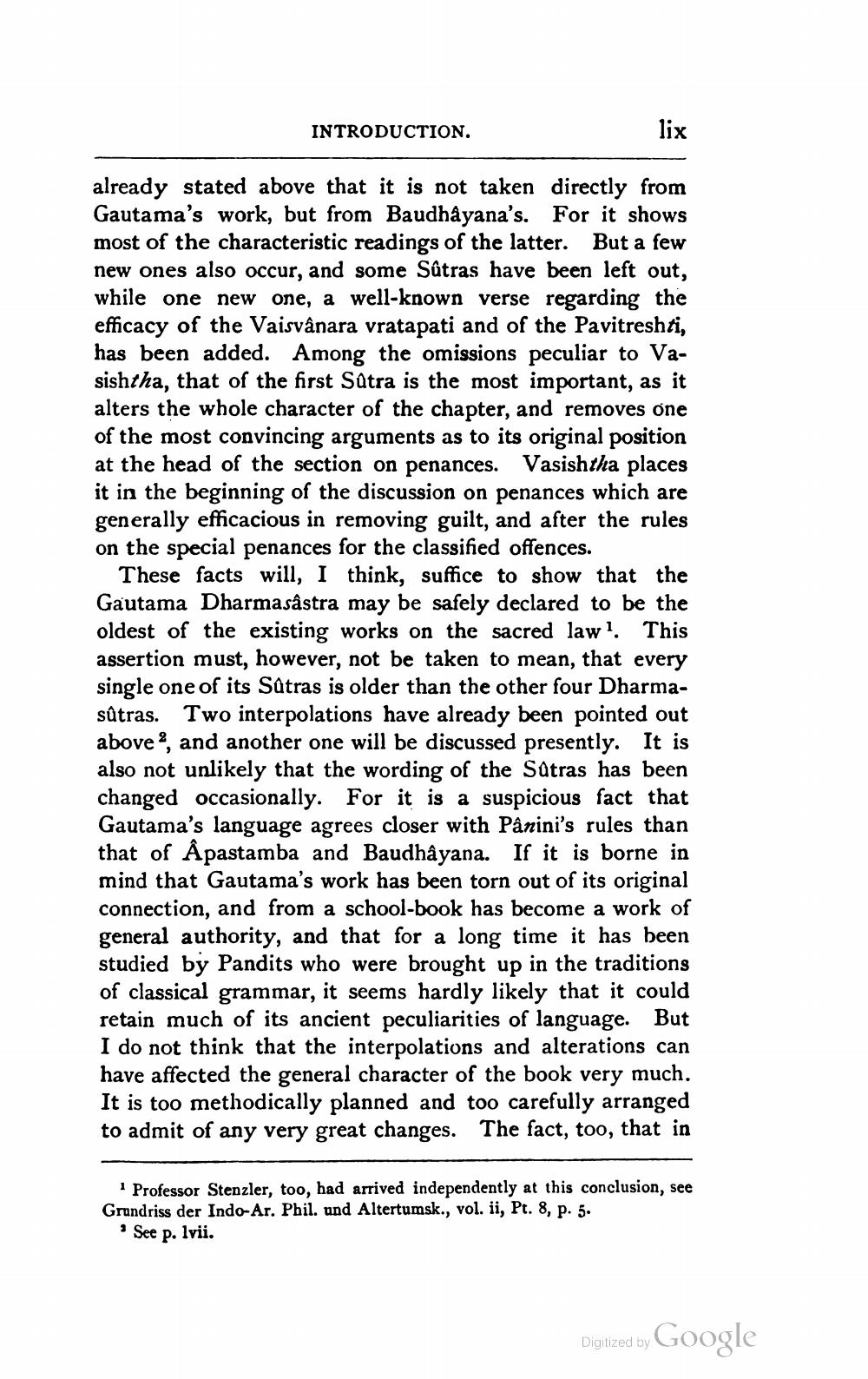________________
INTRODUCTION.
lix
already stated above that it is not taken directly from Gautama's work, but from Baudhayana's. For it shows most of the characteristic readings of the latter. But a few new ones also occur, and some Sûtras have been left out, while one new one, a well-known verse regarding the efficacy of the Vaisvânara vratapati and of the Pavitreshti, has been added. Among the omissions peculiar to Vasishtha, that of the first Sutra is the most important, as it alters the whole character of the chapter, and removes one of the most convincing arguments as to its original position at the head of the section on penances. Vasishtha places it in the beginning of the discussion on penances which are generally efficacious in removing guilt, and after the rules on the special penances for the classified offences.
These facts will, I think, suffice to show that the Gautama Dharmasâstra may be safely declared to be the oldest of the existing works on the sacred lawl. This assertion must, however, not be taken to mean, that every single one of its Sûtras is older than the other four Dharmasûtras. Two interpolations have already been pointed out above, and another one will be discussed presently. It is also not unlikely that the wording of the Satras has been changed occasionally. For it is a suspicious fact that Gautama's language agrees closer with Pânini's rules than that of Âpastamba and Baudhayana. If it is borne in mind that Gautama's work has been torn out of its original connection, and from a school-book has become a work of general authority, and that for a long time it has been studied by Pandits who were brought up in the traditions of classical grammar, it seems hardly likely that it could retain much of its ancient peculiarities of language. But I do not think that the interpolations and alterations can have affected the general character of the book very much. It is too methodically planned and too carefully arranged to admit of any very great changes. The fact, too, that in
Professor Stenzler, too, had arrived independently at this conclusion, see Grundriss der Indo-Ar. Phil. und Altertumsk., vol. ii, Pt. 8, p. 5.
See p. lvii.
Digitized by Google




